
Learning how to taste whiskey is a project. Part of that project is building a palate, something that happens over the course of a lifetime. You can’t teach a palate. But there’s another component you can teach, and that’s learning the ins and outs of how to taste whiskey. Once you learn that, it’s like riding a bike — you’ll never forget how to do it. With that in mind, I’m going to do my best to teach you how to taste whiskey like a pro.
I know, it’s a lot; all this frou-frou sipping, spitting, and analyzing. It feels… elitist, somehow. It can feel like a barrier to entry. All I can say is that the one hard-and-fast rule is that you can’t do it that wrong. If you treat a fancy Glencairn pour as a shot at a dive bar, then yes, you’re doing it wrong, and you’ll likely burn out your palate too boot, especially if it’s a high-proof pour. Beyond that, whiskey tasting is about taking a journey through a flavor profile, the kind that only you, with your singular palate, can take. There are steps, but we’re not talking about anything that rigid.
I open all my tasting experiences with this, “Your palate is not mine and vice versa. We’re all going to find different notes in every sip, and we’ll all be correct in what we find.”
You are supposed to experience as many different smells and flavors as possible while tasting a whiskey, that’s why you take your time with it. This leads to the old whiskey-tasting adage: You can’t be wrong when calling out a flavor note or aroma. There are close to a thousand chemical compounds that express as certain flavors or smells in a single glass of whiskey. If you taste gorgonzola, walnuts, and wild honey, then that’s what you taste. If anyone ever says you’re wrong, they’re full of shit.
Okay, let’s cut to the chase and actually dive into how to taste whiskey like a pro. I’ll guide you through. I’m a professional spirits taster, judge, and consultant. This stuff is literally my life and my tasting skills/palate acumen pay the bills. So, you’re in good hands.
Also Read: The Top 5 UPROXX Bourbon Posts Of The Last Six Months
- We Blind Tasted A Whole Bunch Of $30-60 Bourbons To See If Any Could Beat Weller
- We Put A Whole Bunch Of Bourbons To A Giant Blind Test And Discovered Some Absolute Gems
- We Blind Tasted Classic Bourbons And Were Shocked By The Winner
- The Best-Known Basic Bottles Of Bourbon, Blind Tasted And Ranked
- All The Double Gold-Winning Straight Bourbons From This Year’s San Francisco World Spirits Competition
Learn Some Vernacular
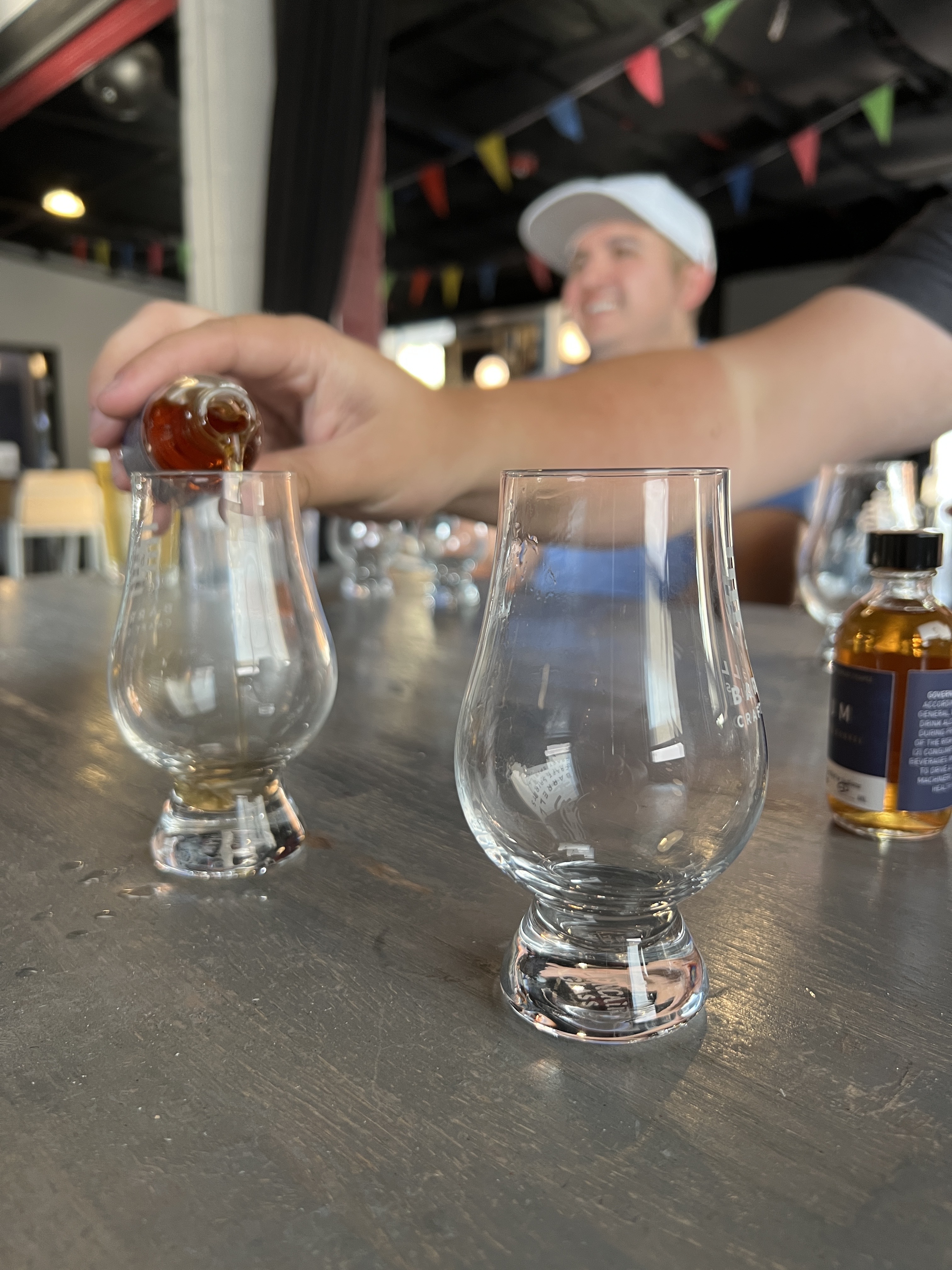
The best place to start is to learn some of the words. Things like “the color,” “the nose/aroma,” and “the flavor/taste,” feel pretty obvious. What do you see, smell, and taste? The “finish,” on the other hand, is a little more esoteric. It’s about what you’re tasting, sure, but it’s also about vibe and experience. How does that whiskey leave you feeling? Does it transport you to your grandma’s kitchen while she’s baking cookies? Are you on a dock in the pouring rain shucking oysters? Where does it take you and how clearly does it do that?
A “Glencairn” is the glass you’ll most likely see at a tasting. It’s the refined crystal glass that’s non-reactive, perfectly formed for nosing and tasting, and damn near universal.
A “flight” or “panel” is a set of whiskeys that you taste in succession.
We could get into “terpenes” or “esters” or other chemicals, but honestly, even I roll my eyes at folks who use those terms in the setting of a casual consumer whiskey tasting (if you’re talking about blending a whiskey as work at a distillery, that’s a different thing entirely). Still, you don’t really need to know about the compound “vanillin,” you can just say “vanilla.” The point is, you don’t need to get super technical here. Keep it simple.
Overall, go to whiskey tastings and listen to the guide. What they say will help you build out your whiskey language skills each and every time. It’s okay to learn as you go.
Do Some Research
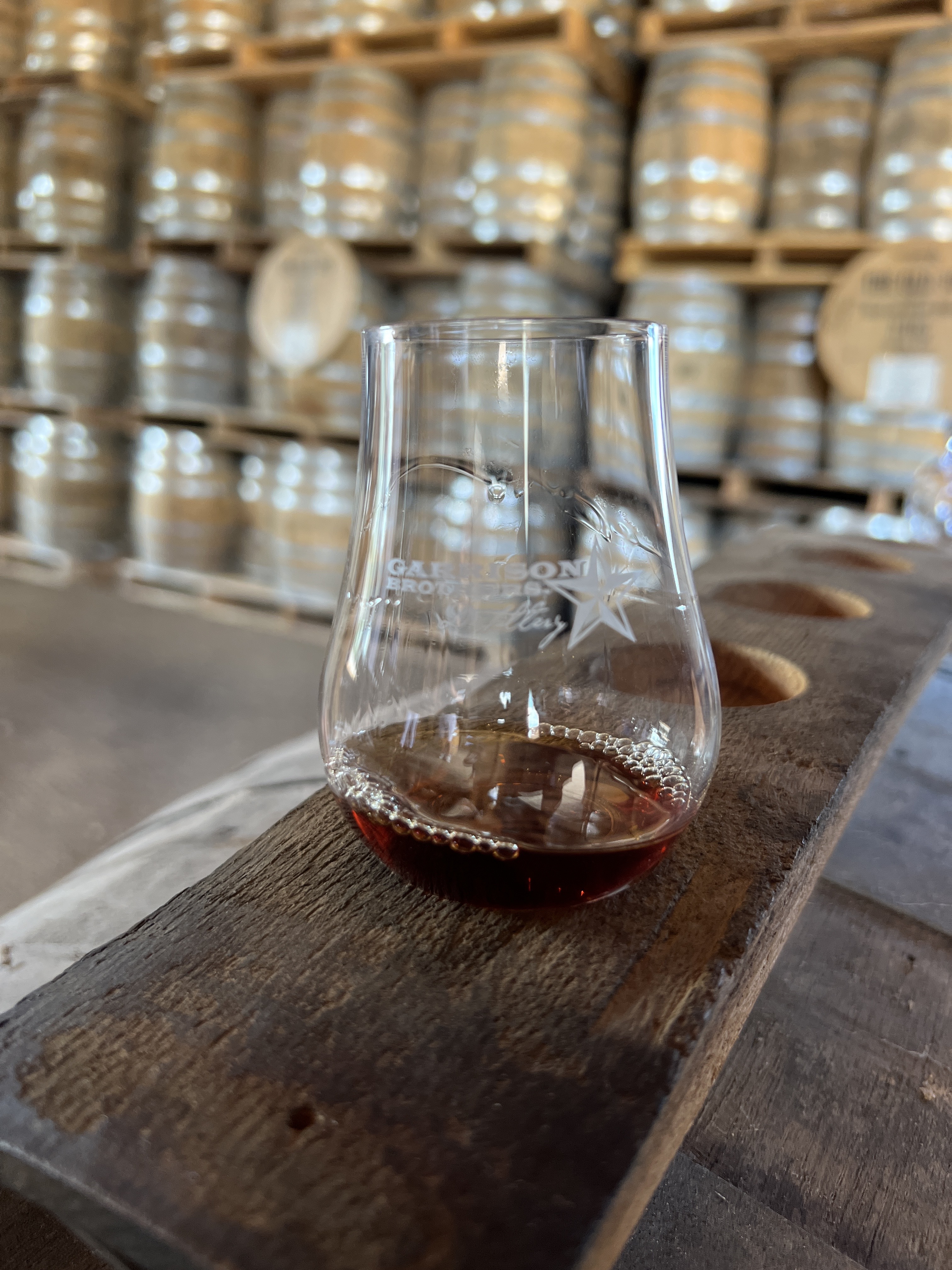
I’d argue this is a little more important than learning what esters are. Learn about the whiskey(s) you’re tasting. Look up the history of the distillery. Look up the mash bills (recipes) and bottle details ahead of time. Learn about the people behind the brand/tasting. All of this is online these days either via brand websites or social media handles. The days of some master distiller or blender tinkering away in Scotland or Kentucky without any exposure to the consumer are long dead.
There’s a ton of information out there with full descriptions of what’s in the bottle physically and what to expect. Look at it this way: you can’t “spoil” what’s in a pour of whiskey by reading the brand’s tasting notes. There’s a good chance that you’ll never taste all the various notes they’ve listed, or that you’ll taste a whole bunch they didn’t, because, as we’ve said, you have a unique palate that’ll dictate all of this. So reading what the distiller/blender/bottler had in mind when they released a certain expression is a good way to understand what they were aiming for, but then you can also apply your own palate to see how far off or near that bull’s eye they landed with what’s actually in the bottle.
Set The Mood/Set Up
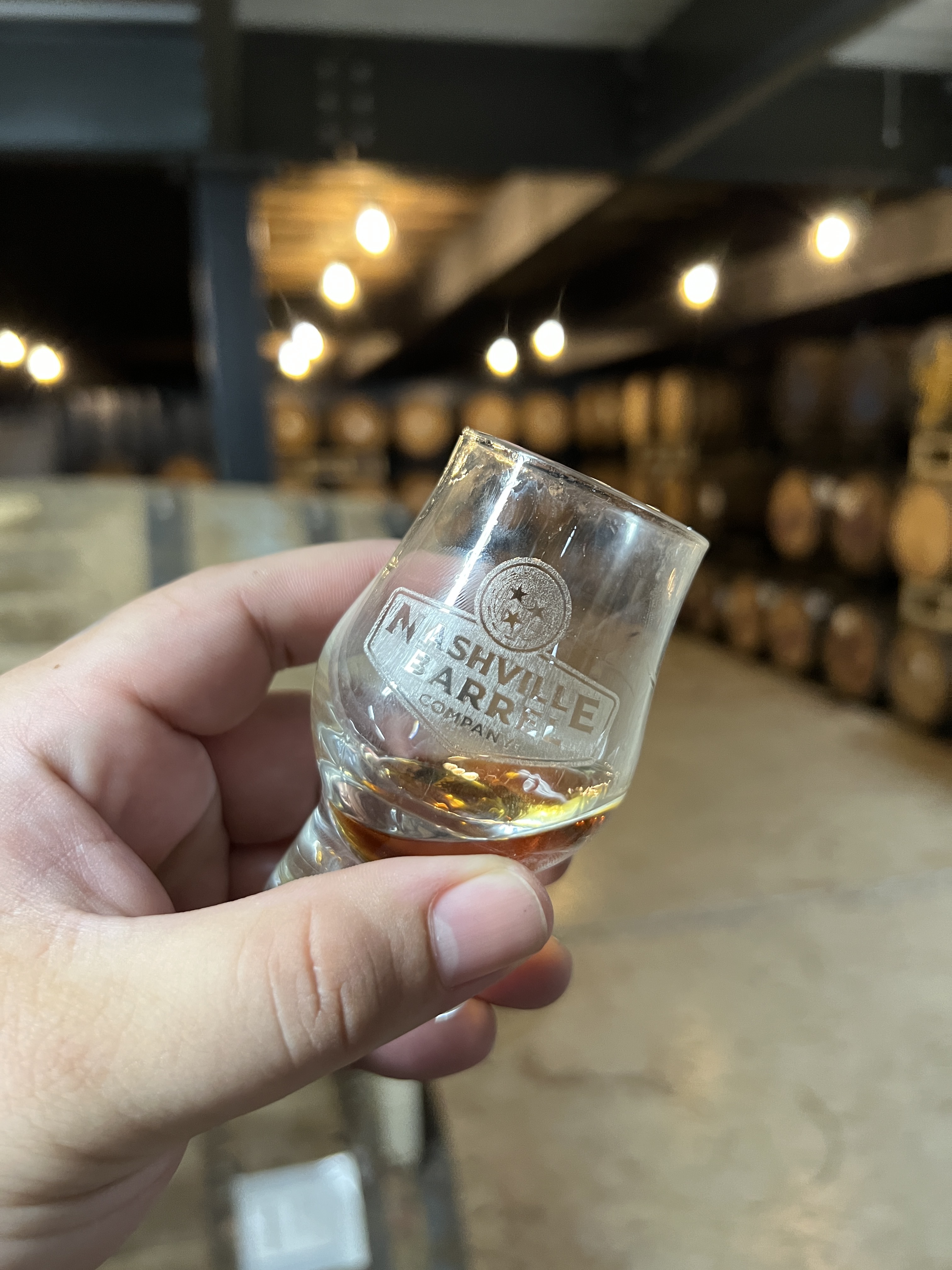
Unless you’re tasting at a distillery, bar, or liquor store, you’ll want to set the mood.
Think about the time of day, your mood, the climate in your home, where you’re going to sit, and what glasses you’re going to use (always use a Glencairn).
I like to have a window open (only a crack if it’s too hot or cold out, but still open). I tend to prefer some music on. I like Beethoven’s Sonatas. I was a music major when I first went to college and studied piano intensely since I was five, so this music is great background noise that I don’t have to focus on. If you really want to get specific, I usually go for his 5th, 6th, 21st, 23rd, 26th, or 28th sonatas (usually Glenn Gould). You don’t have to do that, but find some music that soothes you that you also don’t have to super focus on.
I always have a notepad with a pencil with me. You really want to write everything down. This is a great way to keep track but also call back to things you will forget as you taste more and more. Trust me, you will not be able to remember every detail of every pour you taste as you get a few months and years down the road. So having a journal/notebook to look back on is fundamental.
Now, pour some whiskey! I like to write down each pour I’m going to have as I pour it to keep track. Then you can fill in tasting notes and vibe notes as you go. I usually pour one-ounce pours only. This will give you a chance to nose and taste the whiskey two or three times. I also like pouring early and letting the whiskey set out for five to 10 minutes to allow some air to get to it. It helps it start to bloom in the glass quite a bit.
You’ll also want to ready a spitter (a pint glass is fine). We’re talking about tasting whiskey here, not drinking it. I also have a small glass of water so I can drop some in as I taste (but more on that later).
Lastly, clear your sinuses. Blow your nose. Then figure out which nostril has the most open path for smells (one will always be more open than the other) by nosing some whiskey with each individual nostril.
Prime Your Palate
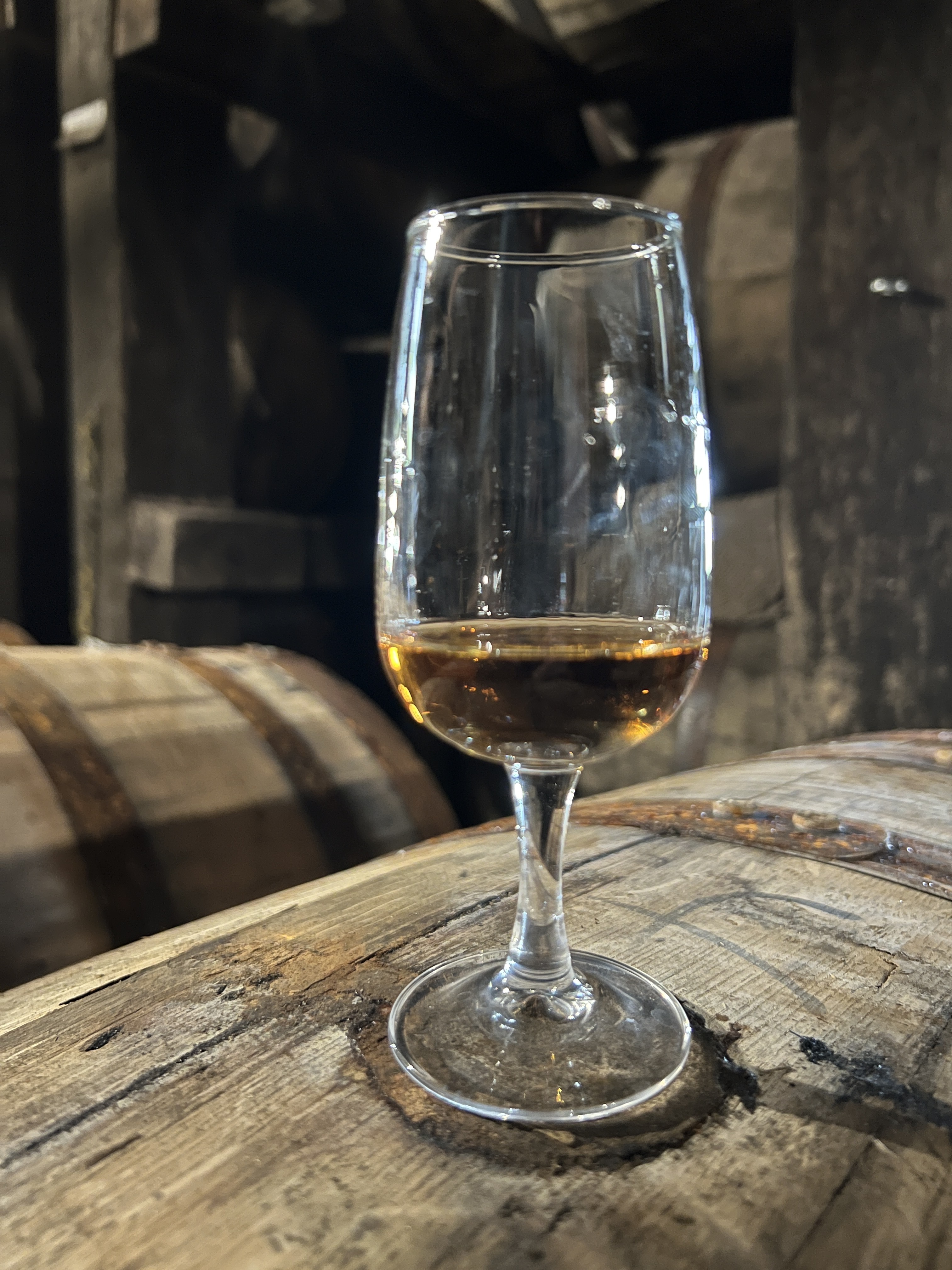
Always prime your palate. I like to rinse my mouth out with gin and/or cheap whiskey. The gin really wakes up the palate by letting the alcohol give you an ABV pop while the flavor profile of gin is very broad and varied, which helps wake up your senses. I’ll also rinse my mouth out with a cheap but good whiskey (Wild Turkey 101 or Evan Williams or whatever you have on hand). This directs your senses toward the whiskey you’re about to taste. I sometimes do both if I’m feeling overly blank before a tasting just to really wake up the ol’ senses.
When I say “rinse,” I mean that I’m putting about one ounce of gin or whiskey in my mouth, sloshing it around for maybe 10-15 seconds, and then spitting it out. You’ll feel your senses waking up as you do this.
Naturally, the time of day is going to make a difference as well. I like doing my tastings early, before food and drink can affect my palate and mood. Post-lunch tastings are also good for me as I can reset my palate pretty easily after one small meal. I do plenty of tastings at the end of the day too, but those are much more about fun and being fast and loose with whoever is around. The point of this is to find your balance but remember that food, drink, and mood are all going to have an impact on what you smell and taste and how that pour makes you feel.
Dig In/Taste
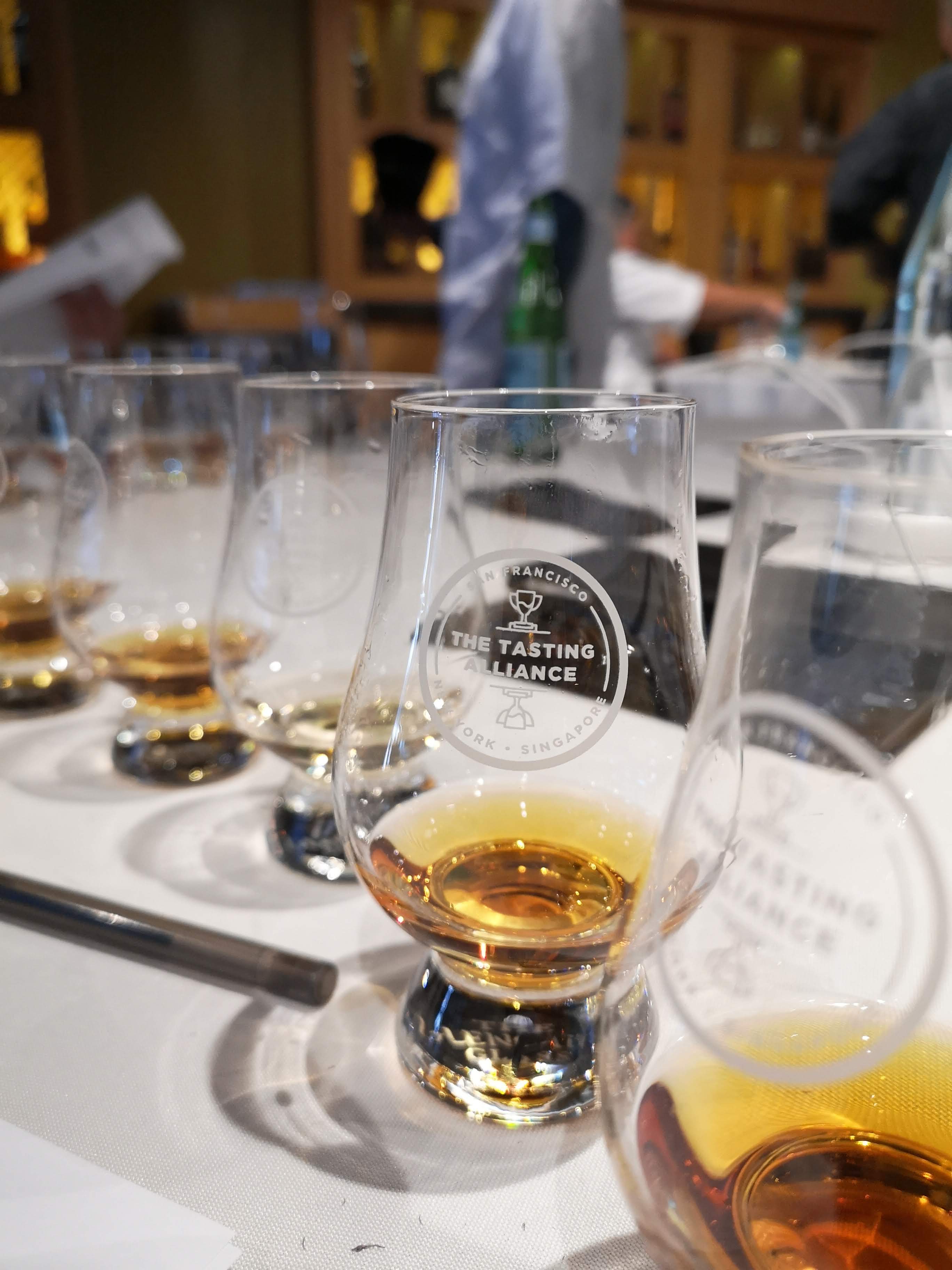
Let’s bullet point this one out:
- Hold the glass up to a white background and look at the color. Try and be as specific as possible with what you see. Is it more amber or maple syrup? Is it a light straw or sparkling apple cider? Write down what you think it looks like.
- Give it a twirl and nose the glass. While nosing, make sure your mouth is slightly open, almost like you’re slack-jawed when you’re passed out asleep in a chair. Gently move your nose close to the glass until you sense a slight alcohol burn — you’re close enough. Now slowly inhale at the bottom, middle, and top of the glass and then the right and left sides (one breath for each). Each spot will carry a different set of smells from woody to spicy to fruity/sweet to bitter to savory. Write down what you’re smelling.
- Take a small sip, just enough to coat the inside of your mouth with a thin layer. Roll it around. Roll it back and forth. Spit. What do you taste? What do you feel? Write it down.
- Go back to the nose. Smell all those spots again. What do you smell now? How does it make you feel? Write it down.
- Take another sip. Roll it around. Write down flavor notes as they come to you while the whiskey is still in your mouth! There are plenty of “ah-ha!” moments in every glass. Spit.
- Now, take a moment, close your eyes, and reflect without the glass. Let the finish settle through your senses. Write down what you taste, smell, and feel.
You just tasted a whiskey like a pro.
Repeat
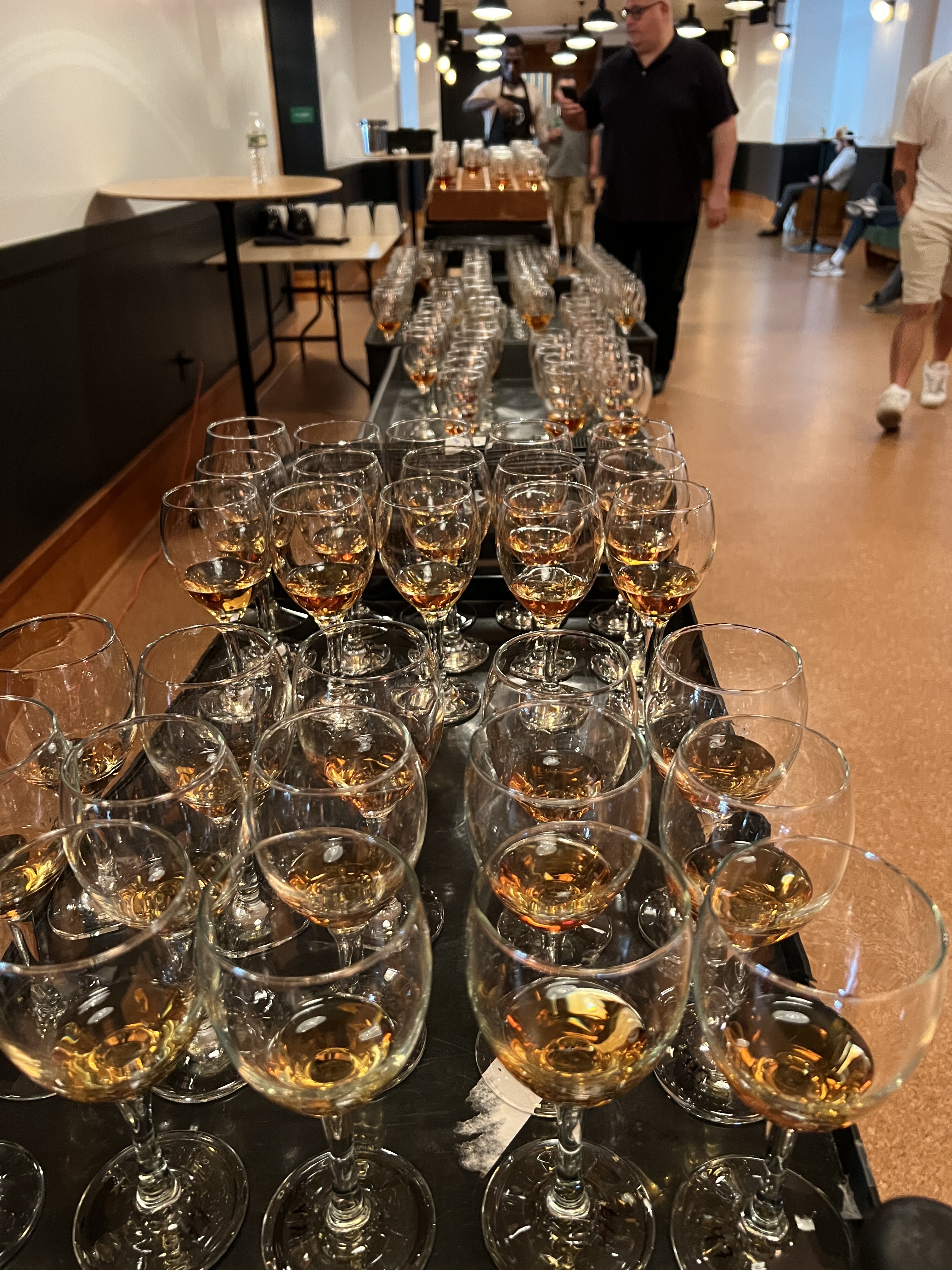
This is paramount to the experience. Go back and try things again. As I mentioned above, so many factors are in play when tasting whiskeys that it can affect what you’re smelling and tasting pretty drastically. I always re-taste whiskeys blind for our blind tastes on UPROXX because maybe my mood just didn’t vibe with some particular pour that day and it ended up last.
You need to be thorough. Some whiskeys just slap in the winter yet fall flat in summer. And that’s not because of the whiskey’s flavor profile, it’s because of how you’re feeling and where your palate is at that moment. Don’t dismiss something until you’ve tried it a few different times in unique circumstances.
Experiment
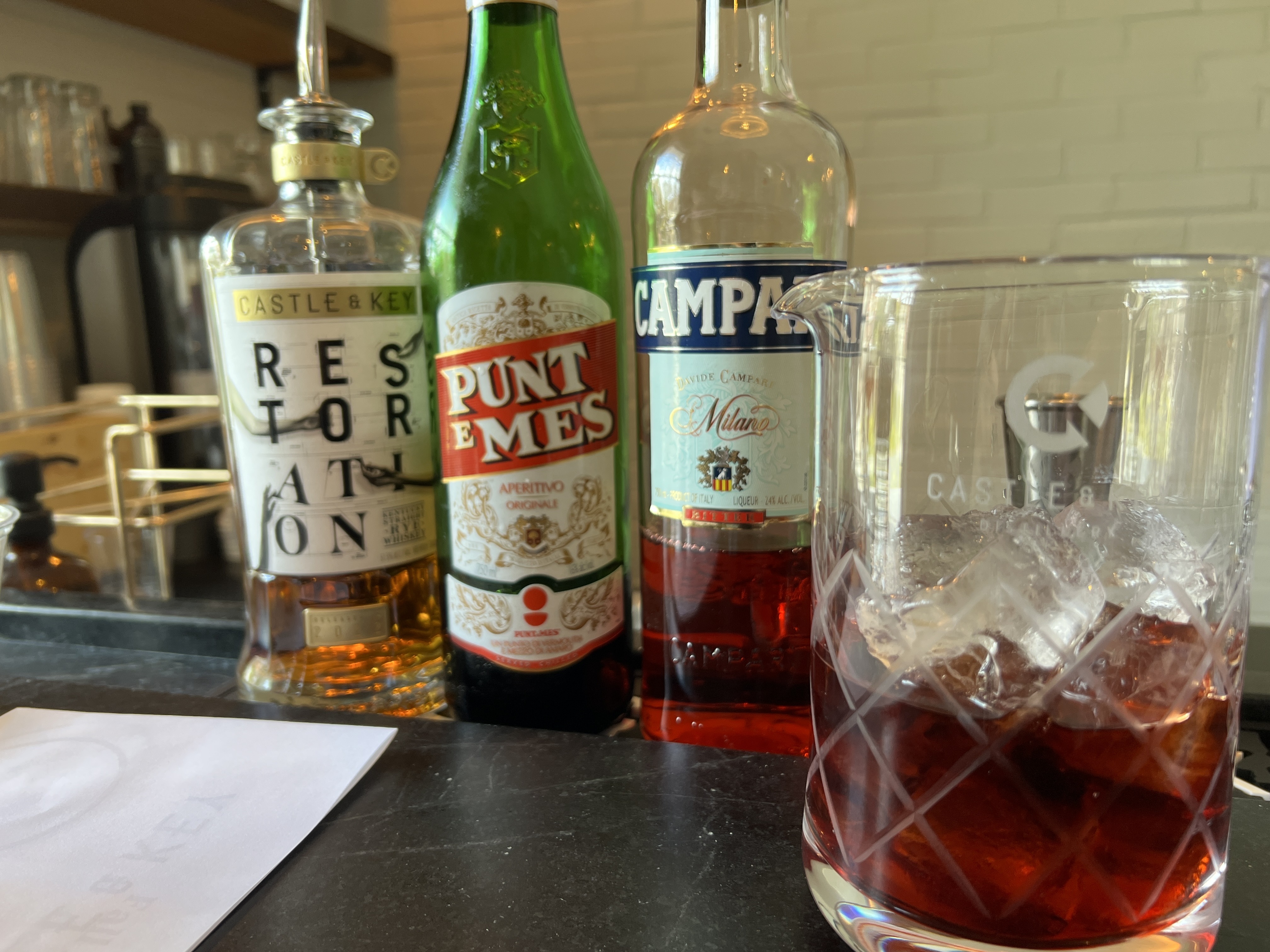
This last part is the fun part.
The first step to experimentation can happen immediately. Add a few drops of water to the whiskey while you’re tasting. Also, this is a great way to know if a taster or whiskey “pro” is full of shit. If anyone ever says that you aren’t supposed to “add water to whiskey,” they’re full of shit and flat-out wrong in every way.
Here’s an insider “secret” — All distillers/blenders proof their whiskey down to 20% (40 proof) with water when tasting whiskey for the bottling line. Yes, even for “cask strength” expressions. Some American distillers only go down to 30 or 40%, but that’s more the exception than the rule. The reason they do this is that whiskey is most pronounced flavor-wise at that proof point. That’s where you get the clearest expression of the whiskey on your nose and tongue.
You don’t need to worry about proofing your whiskey down that much. A few drops of (good) water is fine. This will allow the whiskey to “bloom” in the glass, a process whereby chemical compounds are softened and separate (a bit), releasing clearer flavor notes for your nose and mouth to capture.
Next, pour your whiskey over a rock or two. How does the temperature change affect the flavor and nose? How about in a cocktail? Try the whiskey in some of your favorite cocktails and highballs. Now, how does that whiskey taste/stand up to mixing? Have fun with it. Find the balance you like. And then write that shit down in your notebook so you don’t forget!
